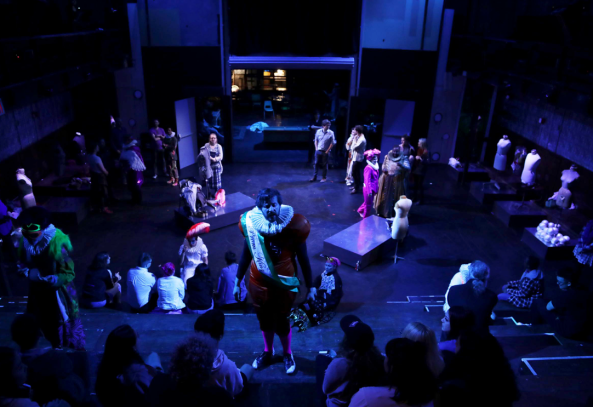The SeagullMachine, Checkov/Muller, The Assembly
Sunday 6th May, LaMama

I didn’t expect much from this production since I was terminally bored by the two previous shows I’d seen at this theatre. I was not only pleasantly surprised by The Seagullmachine, but impressed by the scope of its ambition. The concept is simple: the work is a mash-up of two apparently incongruous plays, Checkov’s The Seagull, an exemplar of naturalism and Heiner Muller’s postmodern tour-de-force, The Hamletmachine. Both plays refer to Shakespeare’s Hamlet, but do so in very different ways. Muller’s references are deliberately overt while Chekov’s are oblique and subtle. The two plays also represent two end points on the spectrum of modern drama in Europe: Chekov’s work plays an important role in inaugurating the tradition while Muller announces its death, although Checkov’s work anticipates and dramatizes the debates about form and content that drive modernist innovation in the drama of the 20th century. The Seagullmachine joins the dots between these two points on the spectrum.
This production is a ‘twofer’: it stages both plays almost in their entirety. During the first half of the show we see a more or less conventional staging of The Seagull. The acting is naturalistic, but the house lights remain up, so members of the audience can see each other throughout the performance. I found the audience reactions as compelling as the play, and that’s not a putdown of the actors. They were great. However, it’s fascinating to watch how people are engaged (or disengaged) throughout a performance. The decision to eschew traditional stage lighting was brave, and it paid off by adding an extra layer of complexity to the actor/audience relationship. On a few occasions, the actors in The Seagull recite lines from Muller’s play. This creates a haunting effect. It as though Hamletmachine is knocking on The Seagull’s door, threatening to break it down, which of course it does after a strange cabaret interlude at the point of the suicide which concludes the Checkov text.
Then, the audience is moved into LaMama’s larger theatre space and the company perform The Hamletmachine. There is a bit of audience interaction, and the cast divide the audience into small groups and perform to this newly created subset. The play morphs from conventional naturalism to a wild postmodern barrage of noise and colour. Sound and fury signifying nothing? I don’t think so. This was a very compelling production that kept me engaged, and prompted me to think about the status of ‘experimental’ theatre. This was probably the best thing I saw during my short stay in NYC.